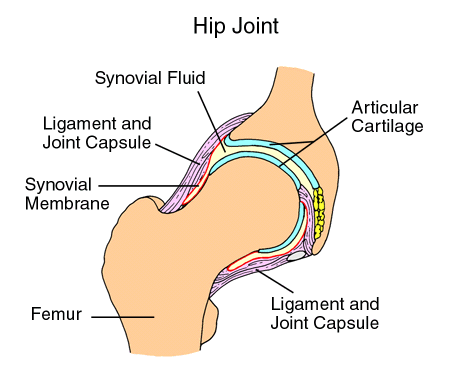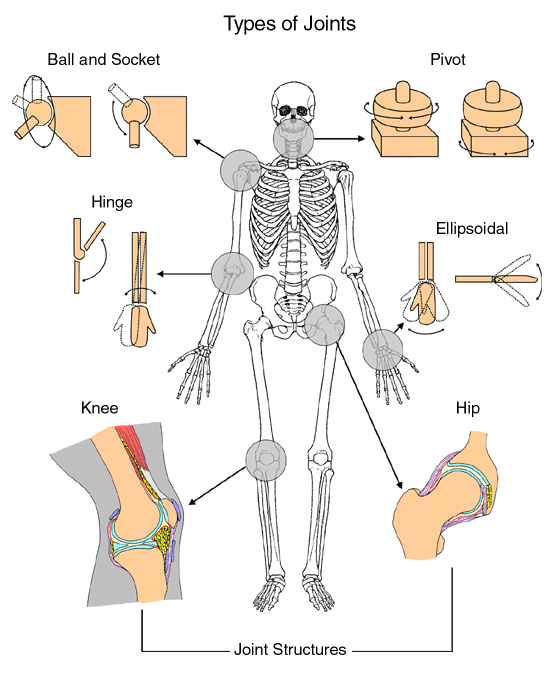Joints are the areas where two bones meet. Most joints are mobile, allowing the bones to move. Joints consist of the following:
- Cartilage: At the joint, the bones are covered with cartilage (a connective tissue), which is made up of cells and fibers and is wear-resistant. Cartilage helps reduce the friction of movement.
- Synovial membrane: A tissue called the synovial membrane lines the joint and seals it into a joint capsule. The synovial membrane secretes synovial fluid (a clear, sticky fluid) around the joint to lubricate it.
- Ligaments: Strong ligaments (tough, elastic bands of connective tissue) surround the joint to give support and limit the joint's movement.
- Tendons: Tendons (another type of tough connective tissue) on each side of a joint attach to muscles that control movement of the joint.
- Bursas: Fluid-filled sacs, called bursas, between bones, ligaments, or other adjacent structures help cushion the friction in a joint.
- Synovial fluid: A clear, sticky fluid secreted by the synovial membrane
- Femur: The thigh bone
- Tibia: The shin bone
- Patella: The kneecap
- Meniscus: A curved part of cartilage in the knees and other joints







